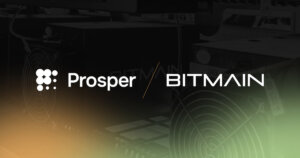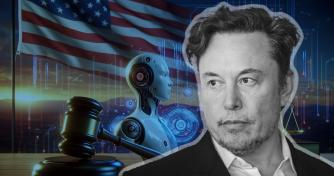 Spotlight on AI, digital assets at House subcommittee hearing
Spotlight on AI, digital assets at House subcommittee hearing Spotlight on AI, digital assets at House subcommittee hearing
Members of the SEC, the Federal Reserve, and other agencies testified before the House Subcommittee on Digital Assets, Financial Technology, and Inclusion on Dec. 5 while legislation continues to languish.

Cover art/illustration via CryptoSlate. Image includes combined content which may include AI-generated content.
The House Financial Services Subcommittee on Digital Assets, Financial Technology, and Inclusion convened a pivotal hearing on Dec. 5, to hear from high-ranking representatives from federal agencies, including the Federal Reserve, Securities and Exchange Commission (SEC), and the Office of the Comptroller of the Currency (OCC), spoke on the increasing influence of new technologies such as digital assets, distributed ledgers, and artificial intelligence in reshaping the financial sector.
The hearing underscored the escalating need for robust supervision of digital assets, a greater focus on AI risks, and a cautious approach toward implementing distributed ledger technology in federal banking.
In an opening statement, Subcommittee Chair French Hill said:
“Today, new and emerging technologies like digital assets, distributed ledgers, quantum computing, and greater use of artificial intelligence are dominating discussion.”
He said that, for the current hearing, the committee has asked members from government agencies to testify about their work on innovation in those areas.
Agencies address crypto issues
Representatives from numerous federal agencies weighed in on issues related to cryptocurrency. Michael S. Gibson, Director of Supervision and Regulation at the Federal Reserve, said his agency recently announced a novel activities supervision program. This program aims to manage risks associated with cryptocurrency, Distributed Ledger Technology (DLT), and intricate technology-driven collaborations with fintech firms outside of traditional banking
Meanwhile, Valerie A. Szczepanik, Director of the Securities and Exchange Commission (SEC)’s FinHub, said her group has spent a “significant amount of attention and resources” on distributed ledger technology (DLT) and digital assets. Szczepanik underscored that the SEC’s FinHub team has developed a comprehensive guide to assist market players in determining if digital assets qualify as securities.
Donna Murphy from the Office of the Comptroller of the Currency (OCC) noted the agency’s prudent approach to implementing Distributed Ledger Technology (DLT) in federal banking. She added that few OCC-supervised banks have launched crypto products and asserted that the financial industry is instead turning toward tokenizing real-world assets and liabilities as an application for distributed ledgers.
AI risks
Several agencies discussed artificial intelligence (AI) risk. Gibson testified that banks have begun using AI in fraud monitoring and customer service, adding that AI carries risks around “data challenges, explainability, bias, cybersecurity, and consumer protection. He also testified that the Federal Reserve is working with other agencies to monitor and learn more about banks’ use of AI.
Meanwhile, Donna Murphy said that the OCC recognizes the banking sector’s growing interest in AI applications and described several operational benefits. She also noted that banks can use AI to provide customer service and products.
Mark Mulholland, a member of the FDIC, acknowledged President Joe Biden‘s recent executive order on AI safety and said that the agency is reviewing the order. He said that the FDIC is examining the use of AI in its own internal operations but has not approved generative AIs such as ChatGPT.
Finally, Ann Epstein of the Consumer Financial Protection Bureau (CFPI) noted that AI has been used to market financial products and provide customer service. She said this could have unexpected results and emphasized the need to examine any effects on customers and the financial services industry.
As representatives from the Federal Reserve, SEC, and OCC address the rising challenges and opportunities posed by digital assets, distributed ledgers, and AI, the market’s intensifying call for comprehensive legislative guidance on these digital assets becomes all the more apparent.




 Farside Investors
Farside Investors 
 CryptoQuant
CryptoQuant 











































































